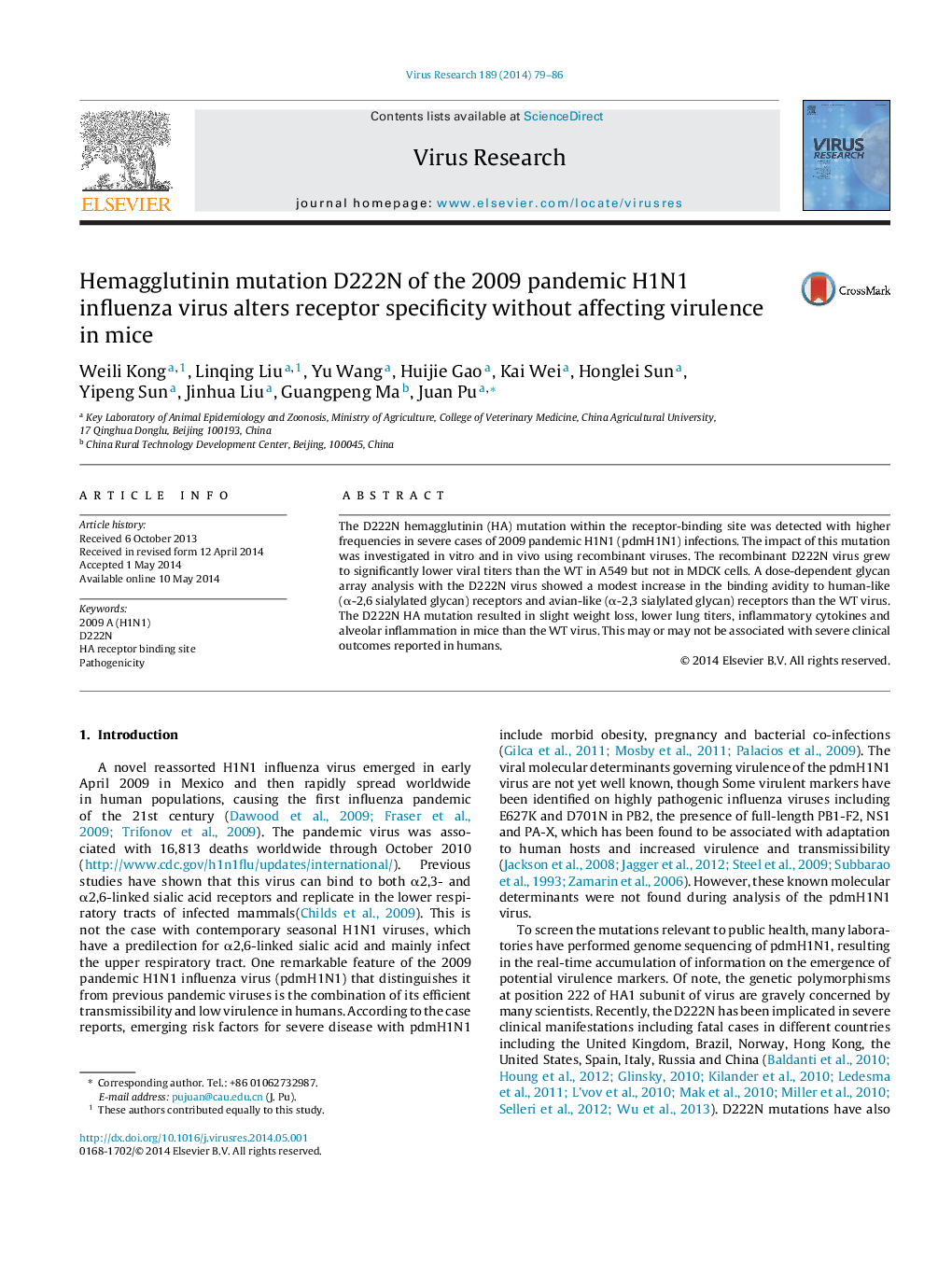| Article ID | Journal | Published Year | Pages | File Type |
|---|---|---|---|---|
| 6142486 | Virus Research | 2014 | 8 Pages |
â¢The D222N hemagglutinin mutation within the receptor-binding site was detected with higher frequencies in severe cases of 2009 pandemic H1N1 infections.â¢The D222N alters receptor specificity and does not change the virulence.â¢The results implied that the receptor specificity may not linked to pathogenicity.
The D222N hemagglutinin (HA) mutation within the receptor-binding site was detected with higher frequencies in severe cases of 2009 pandemic H1N1 (pdmH1N1) infections. The impact of this mutation was investigated in vitro and in vivo using recombinant viruses. The recombinant D222N virus grew to significantly lower viral titers than the WT in A549 but not in MDCK cells. A dose-dependent glycan array analysis with the D222N virus showed a modest increase in the binding avidity to human-like (α-2,6 sialylated glycan) receptors and avian-like (α-2,3 sialylated glycan) receptors than the WT virus. The D222N HA mutation resulted in slight weight loss, lower lung titers, inflammatory cytokines and alveolar inflammation in mice than the WT virus. This may or may not be associated with severe clinical outcomes reported in humans.
